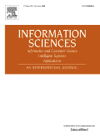Special Issue on Membrane Computing


Aim and Scope
Membrane Computing is a computing paradigm, a istributed parallel computing devices (called, generically, P systems) processing multisets of objects (symbols, strings, numbers) by rewriting or biologically inspired evolution rules. Membrane Computing contains elements of theoretical computer science as well as neural computation and nature-inspired optimisation and, thus, can be viewed as a contact point between automata, formal languages and bio-inspired computation.
As parallel and unconventional computing devices, P systems have proved to overcome the well-known limitations imposed by the conventional techniques based on sequential machines and von Neumann architecture. Besides, due to their generality, they are extremely versatile and can be used both as “classic” computing models, as well as a framework for modelling biological and non-biological processes, also in control and optimisation.
The bibliography of the domain is already very comprehensive, including more than 120 PhD theses, tens of collective volumes, monographs and contributions in renowned journals, with topics ranging from significant theoretical results to relevant real-life applications.
Themes
This special issue collects original research works about recent advances in Membrane Computing. With this special issue, we wish to promote Membrane Computing to the general Computer Science community. Hence, we expect the articles to be accessible to/understandable by non-specialists in Membrane Computing or in Theoretical Computer Science. Theoretical results, applications, and implementation aspects are welcome. The list of topics includes but is not limited to:
• New P system architectures
• Studies on computational power (that is the capability of producing the same string), computing efficiency and computational complexity of P systems
• P systems as number generators to solve optimisation problems
• P systems as neural systems to aid optimisation algorithms
• Applications of P systems to engineering problems
• Computational modelling based on Membrane Computing of biomollecular processes (micro-level) and real ecosystems (macro-level)
Submission Guidelines
The manuscripts should be prepared according to the "Guide for Authors" section of the journal found at: https://www.elsevier.com/journals/information-sciences/0020-0255/guide-for-authors
and submission should be done through the journal's submission website: https://ees.elsevier.com/ins/default.asp
by selecting "SI: MC" and also clearly indicating the full title of this special issue "Membrane Computing" in comments to the Editor-in-Chief.
Each submitted paper will be reviewed by expert reviewers. Submission of a paper will imply that it contains original unpublished work and is not being submitted for publication elsewhere.
Important dates
• Submission deadline: June 30th, 2021
• Notification of first round: September 30th, 2021
• Re-submission deadline: November 30th, 2021
• Final decision: February 28th, 2022
Guest Editors
University of Nottingham, UK
ferrante.neri@nottingham.ac.uk
Huazhong University of Science and Technology, China
University of Sevilla, Spain
Special Issue on Membrane Computing
INFORMATION SCIENCES


